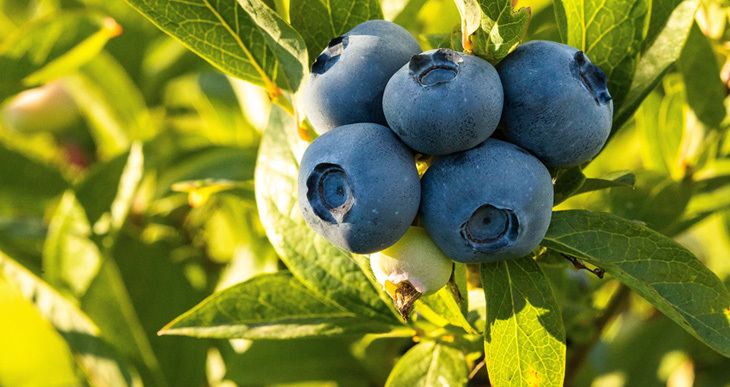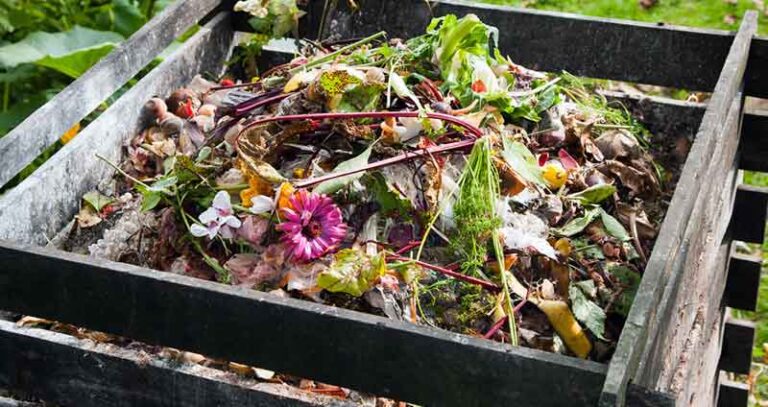What is Ericaceous Compost (Things you Need to Know)

I only learned about ericaceous compost recently when I started to get interested in blueberry plants.
Confused ?
So was I at first. But it’s really not that complicated.
In this article I’ll explain everything you need to know about ericaceous compost, what it is, which plants need ericaceous compost, how to make it, and how to use it…
Ready ?
What is Ericaceous Compost ?
Ericaceous compost is any compost with a low pH. In other words, this type of compost is slightly acidic. It’s used as a soil amendment for ericaceous plants which prefer acid growing conditions. A lot of popular plants are ericaceous, and they may even die if soil is too alkaline!
The word “Ericaceous” relates to plants from the “ericaceae” family, more commonly known as the heather family.
“Ericaceous”
Click below to listen to the pronunciation of “ericaceous”.
How Acidic is Ericaceous Compost
This type of compost has a pH of between 4 and 5. This is quite a bit lower than the pH of normal finished compost, which usually ranges between 6 and 8.
A quick explanation about pH: This is a measurement of how acid or alkaline something is. The pH scale ranges from 0 (the most acid) to 14 (the most alkaline). Gardeners often talk about soil being “sweet” (alkaline) or “sour” (acid).

So ericaceous is a fancy term for “acid-loving”, or if you prefer, “lime-hating”. And because certain types of plants prefer acidic conditions, mixing ericaceous compost into the soil before planting can promote better plant health and growth.
You can see where this is going… right ?
Blueberries are acid-loving. My blueberry plants needed the right environment in order to thrive. This kind of thing is pretty important if you want your plants to succeed.
But blueberries are not the only common plants that are lime-hating…
Which Plants need Ericaceous (acidic) Compost
So, is ericaceous compost good for all plants ?
As you probably figured out, the answer is no.
Different plants thrive in different types of soil. It stands to reason that plants from the ericaceae family will benefit from the addition of acidic compost. And you may be surprised which well-known plants actually prefer lime-free soil.
To give you an idea, here’s a list of some popular ericaceous plants:
- Heather (pretty obvious huh ?)
- Camellia
- Rhododendron
- Pieris
- Hydrangeas
- Magnolia
- Daffodils
- Azaleas
- Huckleberry
- Holly
- Oak
- Japanese maple
- Juniper
- Blueberries
- Cranberries
- Raspberries
Do I Need Ericaceous Compost
Before you grab some ericaceous compost and lavishly spread it over your topsoil, you should try and figure out what your current soil situation is like.
On average, most garden solis have a pH which ranges from slightly acidic to neutral. In wetter areas with plenty of rainfall, the pH typically lies between 5 and 7. For drier, more arid parts of the world, the pH can range from 6,5 to 9.
Note that the ideal acidic soil pH for most ericaceous plants is between 4 and 6.
But your own yard conditions can vary depending on a lot of different factors.
Start by testing your soil.
Doing this will tell you the pH of your topsoil, which is a very useful thing to know. If you know nothing else about your garden soil, you should at least know its pH ! Certain plants will literally end up poisoned if the pH is wrong !
There are a few ways you can do this.
You can get an easy to use home test kit like this one.
This will give you a pretty accurate overview of your soil’s current condition. When doing this kind of test it’s a good idea to take samples from a few different places and mix the soil together. This should give a better overall picture.
For an even more accurate reading, you can try using a lab test service similar to this.
You can even try testing soil using a DIY method (less accurate than the previous methods). To find out if your soil is acidic all you need is some baking soda.
Baking soda is alkaline, and when it comes into contact with something acid it sets off a chemical reaction. You can do a simple test by mixing some topsoil with a small amount of distilled water and adding ½ cup of baking soda(tap water is alkaline and would bias the results).
If the mixture bubbles and fizzes then you’re seeing a chemical reaction that indicates your soil is acidic.
This DIY option should give you a good ballpark idea of the pH value of your soil. If you see a strong reaction then you can be pretty sure your soil is acidic. If you get little or no reaction, then it’s probably worth investigating further.
How to Make Ericaceous Compost
If you have your own compost bin (and I recommend you do!) then making ericaceous compost is pretty easy.
Most composts are fairly neutral and have a pH range of between 5 and 7. The aim is to make something which has a lower pH than normal finished compost.
You can boost the acidity of compost simply by mixing in some high-acid organic materials.
Here are a few ideas:
- Pine needles
- Oak leaves
- Sawdust
- Wood chips from conifers
- Coffee grounds
- Bracken
- Sand

I’m lucky enough to have a big conifer tree in my yard, so I used some pine clippings together with some coffee grounds and a little sand to make a batch of ericaceous compost. I just mixed this with some finished compost from my bin.
Make sure that your materials are chopped up or shredded into smaller pieces. Large branches will take a very long time to decompose and leaves like oak can get matted and stick together.
How to use Ericaceous Compost
There are various ways you can use your compost to benefit acid-loving plants. You can sprinkle compost onto your flower beds or tree beds and gently rake it into the soil, or blend it with potting soil when planting ericaceous plants in pots.
But if you’re installing new plants, the best way to give them a boost is to dig a good amount of high-acid growing medium like ericaceous compost into the soil when planting.
Most of your planting medium should be made up of ericaceous compost. As it decomposes in the soil the acidic ingredients will decrease the pH.
Can I use Ericaceous Compost as a Mulch?
After planting my blueberry bushes, it would be nice to just sit back and reap the benefits of the compost 🙂
But unfortunately the soil will eventually go pH neutral over time.
You need to regularly add acid materials, like the ones in the list above, or use more ericaceous compost.
The best way to do this is by using the compost as mulch sprinkled on the surface of your “lime-hating” plant beds.
Watering tip: remember tap water is alkaline. Whereas rainwater tends to be more acidic. It’s a good idea to have plenty of stored rainwater especially for your acid loving plantations. You can use a rainwater collector like this to recover rain from rooftops.
If you aim to grow acid-loving plants then ericaceous compost will help create the best environment with the correct pH conditions. On top of that, compost will help maintain just the right level of drainage and moisture for your plants.







